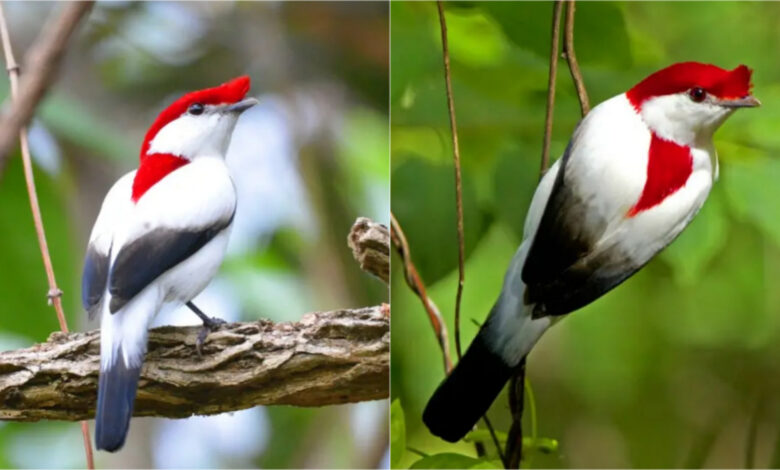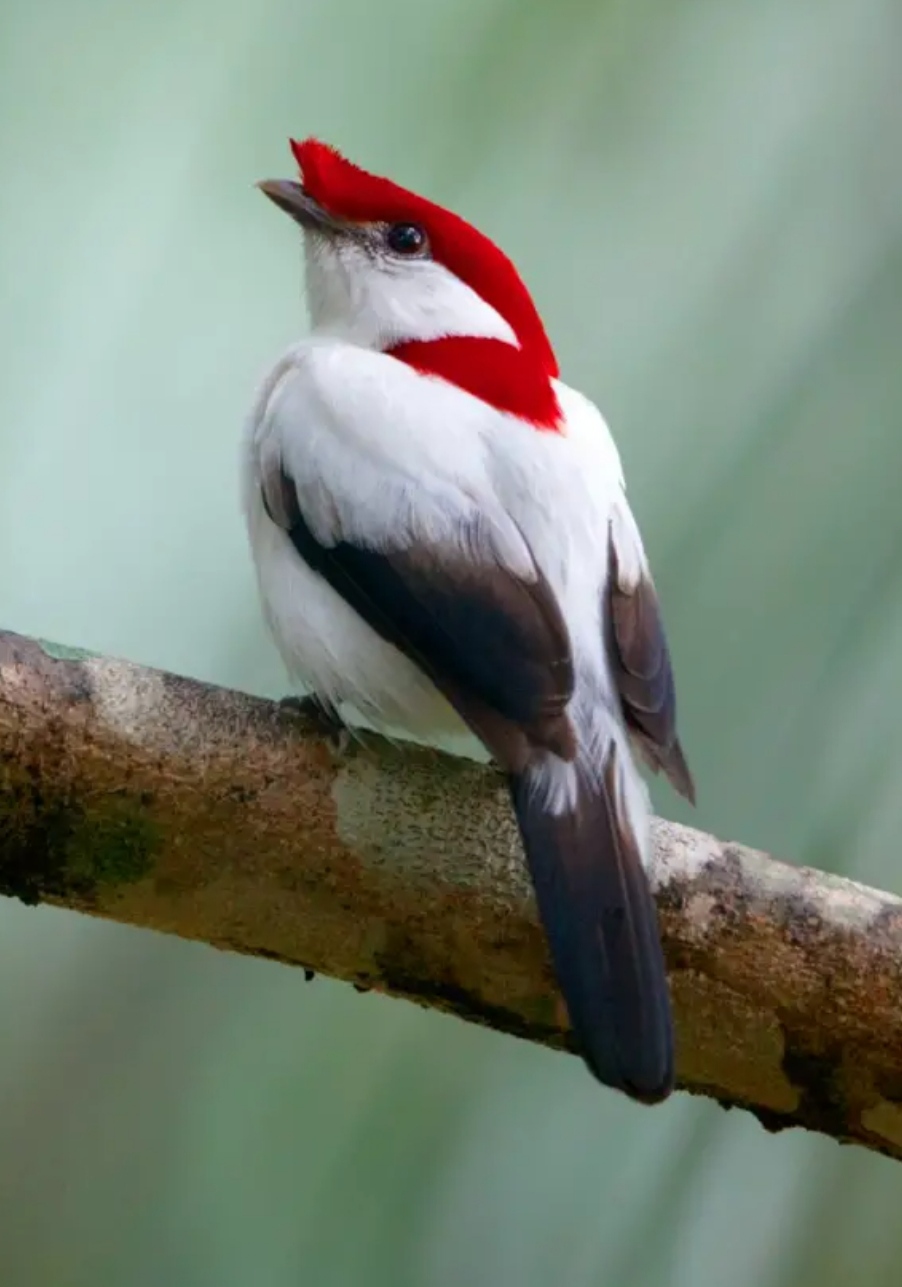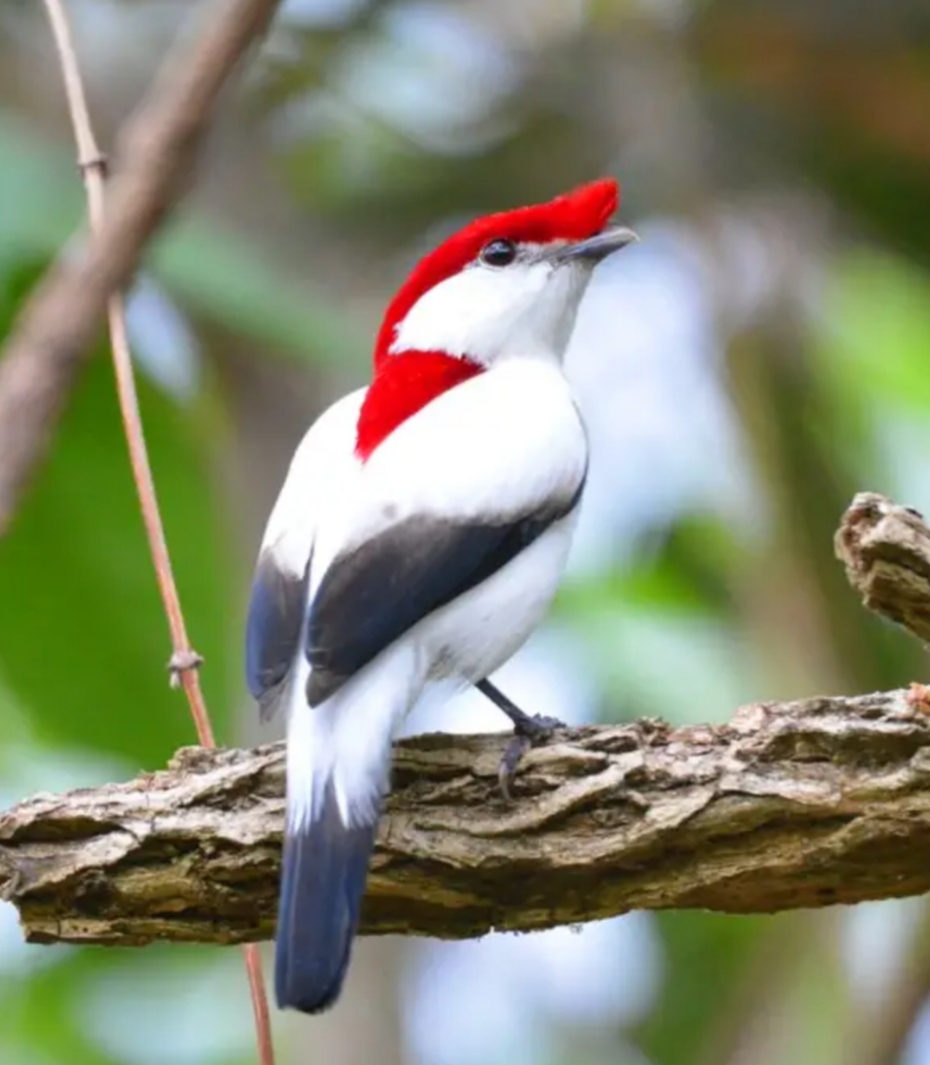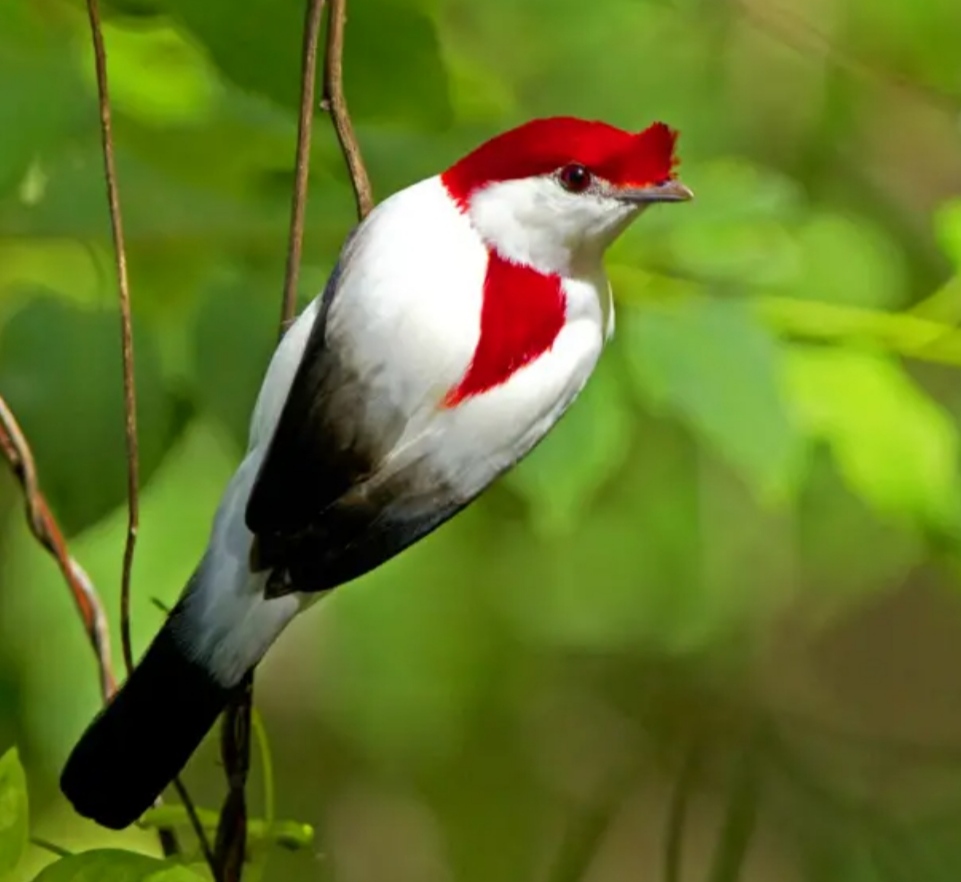RADIANT PLUMAGE AND PLAYFUL SPIRITS: UNVEILING THE BEAUTY AND CHARISMATIC PERSONALITY OF THE ARARIPΕ ΜΑΝΑΚIN BIRD

A small and unusual bird species native to Brazil is called the Araripe manakin, or Antilophia.
Brazil is called the Araripe manakin, or Antilophia
bokermanni in scientific terms. This recently discovered ornithological treasure has won the admiration of experts and bird lovers alike. In this article, we delve into the fascinating world of the araripe manakin, discovering its peculiarities, its habitat, its conservation status and the initiatives being taken to safeguard this endangered species.
Behaviour and appearance: The araripe manakin is renowned for its brilliant plumage and astonishing appearance. Males feature a striking contrast of fiery red and black feathers, with white wing patches and a bright blue cap on the head. Conversely, females have a more discreet but attractive olive-green plumage. Their behavior is equally remarkable, with males performing complex courtship rituals to attract females, such as acrobatic leaps and wing-beating noises.

Endemism: This species exists only in a limited area of northeastern Brazil, known as the Araripe Plateau. The “brejos”, humid woodlands characterized by dense foliage, small streams and springs, constitute the specific environment where the Araripe manakin lives. Temperate temperatures and limestone formations enable these birds to live in the region.

The conservation status of the Araripe manakin is endangered due to the multiple dangers it faces. Habitat loss due to deforestation, increased agricultural production and urbanization is the main threat. In addition, the invasion of exotic species and illegal capture for the pet trade have had an impact on the population. As a result, the International Union for Conservation of Nature (IUCN) has classified the araripe manakin as “critically endangered”, underlining the urgency of conservation efforts.

Conservation projects: Several conservation projects have been set up to protect the future of the araripe manakin. These include
a) Protected areas: The creation of protected areas such as the Araripe-Apodi national forest and the Araripe-Araripina environmental protection zone aims to preserve the bird’s habitat and biodiversity.
b) Research and monitoring: Ongoing research initiatives are keeping a close eye on the population dynamics, behavior and ecological requirements of the Araripe Manakin. These activities provide important information for conservation planning and decision-making.

c) Education and knowledge: It is essential to raise awareness among local communities, decision-makers and the general public of the value of protecting this unique species. Educational programs, birdwatching excursions and community involvement programs foster a sense of responsibility for the araripe manakin.